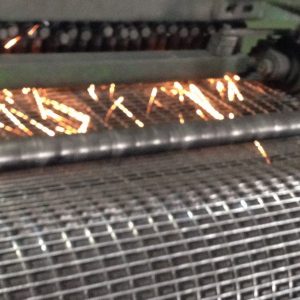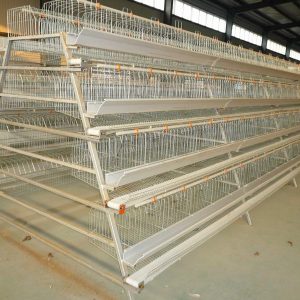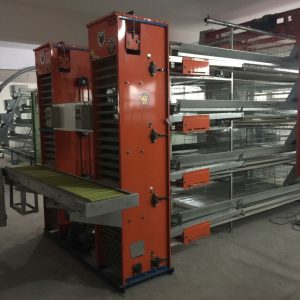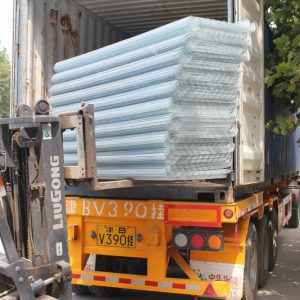
How to calculate the cost of broiler now?
How to calculate the cost of raising chickens? What expenses are included? The cost of raising chickens mainly includes feed, chicks, medicines and vaccines, labor, water, electricity, coal, depreciation of houses and breeding equipment, bedding and other sporadic expenses. The cost accounting method is as follows:
The cost per kilogram of chicken is:
[Feed meat ratio × average feed price] + chicken cost [chicken price ÷ 1.02 (chicken damage loss) ÷ survival rate ÷ slaughter weight KG) + [(medicine vaccine cost + staff salary + water, electricity and coal costs + depreciation + Other expenses) ÷ number of columns ÷ weight of columns KG】Most farmers actually count depreciation and wages as profits instead of costs. For example, the average cost of medical vaccines for every 1,000 chickens in the house is about 300 yuan, that is, the cost of drug vaccines per kilogram of chicken is about 0.17 yuan; the cost of water and electricity for farmers using coal stoves is about 0.1 yuan; other expenses such as bedding, Consumables, etc. offset the income from chicken manure and feed bags. Therefore, when calculating the cost of chickens for farmers, it can be simplified as:
1 kg of hairy chicken chicken cost = feed meat ratio × average feed price + chicken price ÷ 1.74 + 0.27
Among them, 1.74 is the survival rate of 95%, the slaughter weight is 1.8 kg, and the number of miao chickens is 1.02.
Therefore, the main indicators that affect the cost of hairy chickens are: feed to meat ratio, average feed price and chicken price.
One. Feed to meat ratio:
Feed to meat ratio, also known as feed conversion rate, refers to the ratio of feed consumed by broilers to slaughter weight. The feed-to-meat ratio is closely related to the quality of the feed. A poor feed has a high feed-to-meat ratio, while a good feed has a low feed-to-meat ratio. The feed to meat ratio is also affected by the season and feeding management conditions. The feed-to-meat ratio is low in spring and autumn, and the ratio is high in winter and summer; the feed-to-meat ratio is low for those with good feeding and management conditions, and the feed-to-meat ratio is high when the feeding and management conditions are poor (especially feed waste, broiler disease, low survival rate, and meat weight ratio great influence). Broiler breeds also have a great influence on the feed-to-meat ratio. Broilers with fast growth rate and strong disease resistance have low feed-to-meat ratio; chickens with slow growth rate and weak disease resistance have high feed-to-meat ratio.
Assuming that the average feed price is 1.60 yuan/kg and the chicken price is 2.70 yuan/bird, then:
Cost price per kilogram of chicken = feed to meat ratio×1.60+2.70/1.74+0.27= feed to meat ratio×1.60+1.82
2. Average feed price:
Average feed price refers to the ratio of the cost of all feed used by broilers to the quantity of feed. The price of feed generally reflects the quality of feed. Poor quality feed costs low, and good quality feed costs high. In today’s market economy, feeds of the same quality often undergo price adjustments due to changes in raw material prices.
If the feed-to-meat ratio under the general feeding conditions of a certain feed is 2.0, and the price of young chickens is 2.70 yuan per bird, then: the cost price of chickens = 2.0 × feed price + 1.82 many farmers are using small feed factory feed or self-prepared feed , This pretends to not only depend on whether the feed cost is the lowest (that is, whether the product of the feed price of different feed factories and the feed-weight ratio of the broilers raised by different feed factories reaches the lowest point), but also depends on the growth rate. If the growth rate is steamed bread, other costs will increase relatively. Therefore, before using a new brand of feed, it is best to know the feed-to-weight ratio that the feed can achieve, or do a feeding experiment.
Three. Chicken price:
If the feed price is 1.60 yuan/kg; the feed-to-meat ratio is 2.0, then: the cost price of chicken = chicken price/1.74+2.0×1.60+0.27= chicken price/1.74+3.47
If the broiler breeding period is extended to increase weight, the cost of depreciation, wages, medicines and vaccines, water and electricity will also increase, but the impact is not significant relative to each kilogram of chicken. The biggest impact is the cost of feed and the cost of young chickens, the longer the feeding period. The higher the feed-to-meat ratio, the cost of the young chicken will decrease with the increase of body weight.
In summary, we can see:
1. If the broiler weighs 1.8 kg, the survival rate is 95%, the feed-to-meat ratio is 2.0, the average feed price is 1.60 yuan/kg, and the chicken fry price is 2.70 yuan/bird, the cost-guaranteed price of the batch of chickens should be 5.02 yuan per kilogram of chicken. about.
2. If other conditions remain unchanged, the cost will change by 0.08 yuan for every 0.05 yuan change in the feed to meat ratio; the cost will change by 0.10 yuan for every 0.05 yuan/dry gram change in the feed price; and the cost will be changed for every 0.50 yuan per chicken price change. A change of 0.29 yuan.



